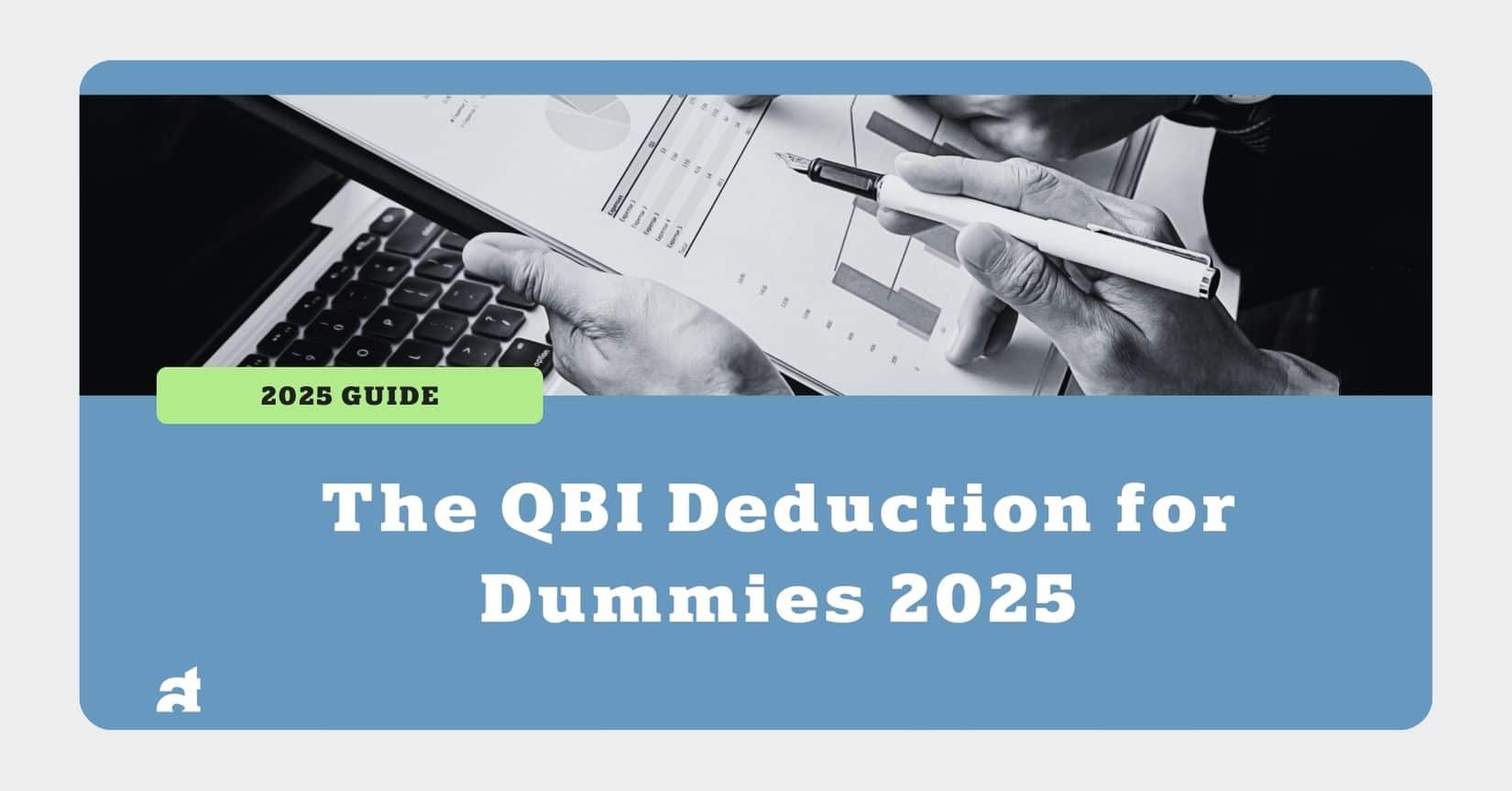
If the phrase “QBI deduction” sounds like a secret code, you’re not alone. It’s just a government shorthand for a tax break that many small business owners can use. Without all the jargon, it’s actually pretty easy to understand.
Let’s break it down and figure out how to take advantage of it in 2025, here’s a 101 on QBI Deduction 2025 that any business owner can understand.
Simply put, the Qualified Business Income (QBI) deduction allows eligible small business owners to deduct up to 20% of their qualified business income from their taxable income.
It’s also known as the Section 199A deduction, which was introduced by the Tax Cuts and Jobs Act (TCJA) in 2018. This was initially scheduled to expire at the end of 2025 but thanks to the 2025 tax law, or the One Big Beautiful Bill Act, the QBI deduction is here to stay.
Now that you know about this 20% tax break, you’re eager to know if your business qualifies.
The QBI deduction applies to pass-through entities, namely sole proprietorships, partnerships, S corporations and limited liability companies (LLCs), and certain trusts and estates. Generally, these are entities that report income on the owner’s personal tax return rather than paying corporate income tax.
The deduction is also available to you if you’re earning qualified REIT dividends or publicly traded partnership income.
This doesn’t apply to C corporations, as they have their own special tax breaks.
Your taxable income before the QBI deduction must be within the annual IRS thresholds. For 2025, the income for single filers should be below $197,300 and for married joint filers, below $394,600. Phase-outs apply after those thresholds.
For high-income earners, W-2 wage and qualified property limits apply once your income exceeds $247,300 (single) or $494,600 (married).
If your business is healthcare, law or accounting etc, it’s likely to be classified as a Specified Service Trade or Business (SSTB).
SSTBs can still qualify for the QBI deductions, within limits. If your income is above $197,300 (single) or $394,600 (married), a portion of your SSTB income still qualifies for the QBI deduction.
However, once your income exceeds the phase-out limits of $247,300 (single) or $494,600 (married), then you’re no longer eligible for the QBI deduction.
You’re not left out just because you’re small. The new law ensures that even small business owners with modest income enjoy a minimum deduction.
If you have at least $1,000 in aggregate QBI from active businesses where you materially participate, you’re now guaranteed a minimum QBI deduction of $400, even if your calculated deduction would otherwise be lower or zero.
The QBI deduction is one of the most valuable tax breaks for business owners. Let’s run through a simple example.
In this case, we’ll use a qualifying business income that’s below the income threshold.
Qualifying Business Income (QBI) = $80,000
Taxable income before QBI deduction = $90,000
20% of QBI = 0.20 × 80,000 = 16,000
20% of taxable income = 0.20 × 90,000 = 18,000
Allowed QBI deduction = the smaller of the two = $16,000
Note that for this scenario, no wage or property test applies as taxable income is below the 2025 threshold of $197,300 (single).
While this calculation looks simple enough, there are many other factors that you’d need to take into consideration, like the Specified Service Trade or Business rule, taxable income level, W-2 wages and qualifying property, prior year losses, aggregation rules, and whether the activity is a trade or business for tax purposes
First, check whether your income puts you near the thresholds. If you’re a service provider earning close to the limits, there might be smart ways to adjust your income or business structure so you still get some of the deduction.
Second, filing the right form matters, Form 8995 or 8995-A, depending on your situation.
Finally, talk to your CPA early so you’re not scrambling when tax time rolls around.
Need help running the numbers or figuring out which form you need this tax season? We’re here for that.
We help small businesses in Texas with their tax planning all year round.
Book a quick call with us today.